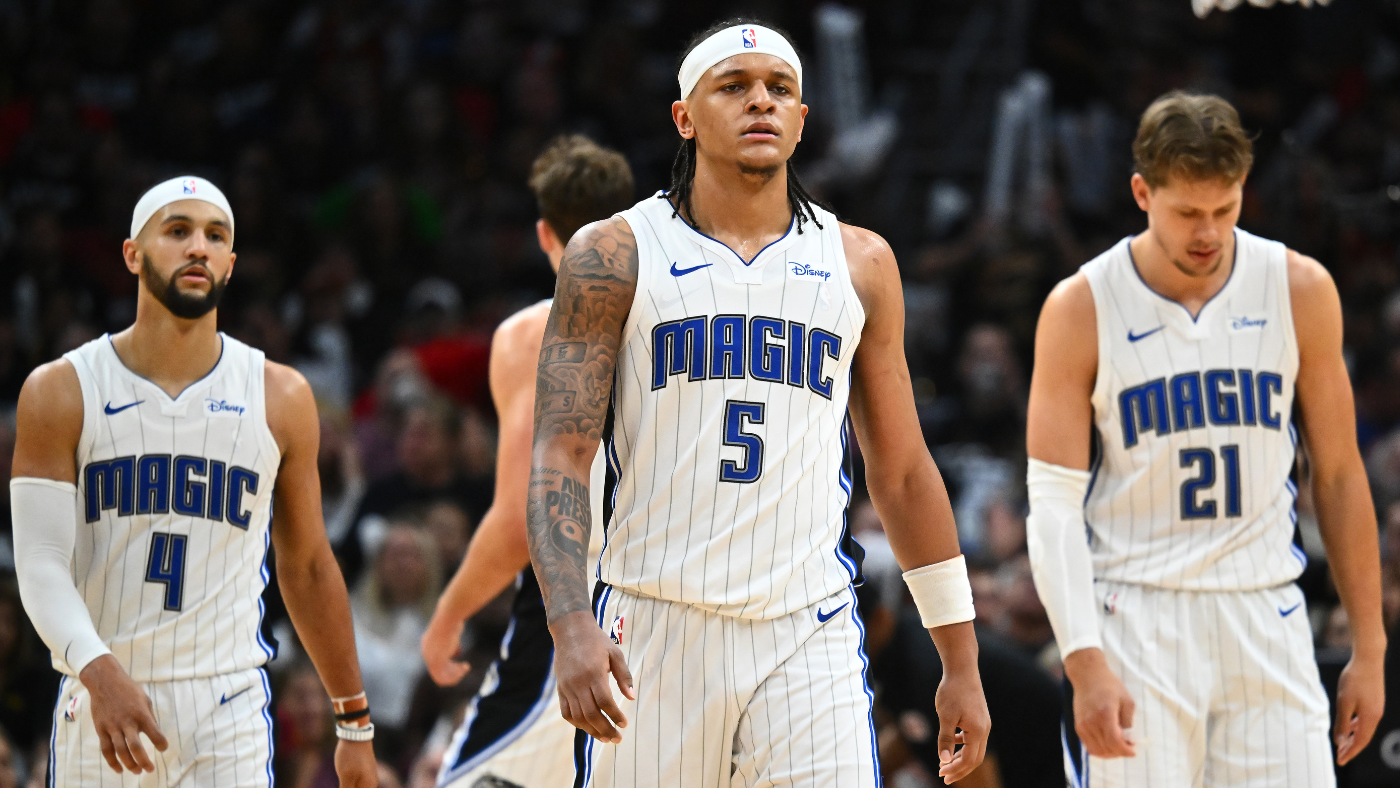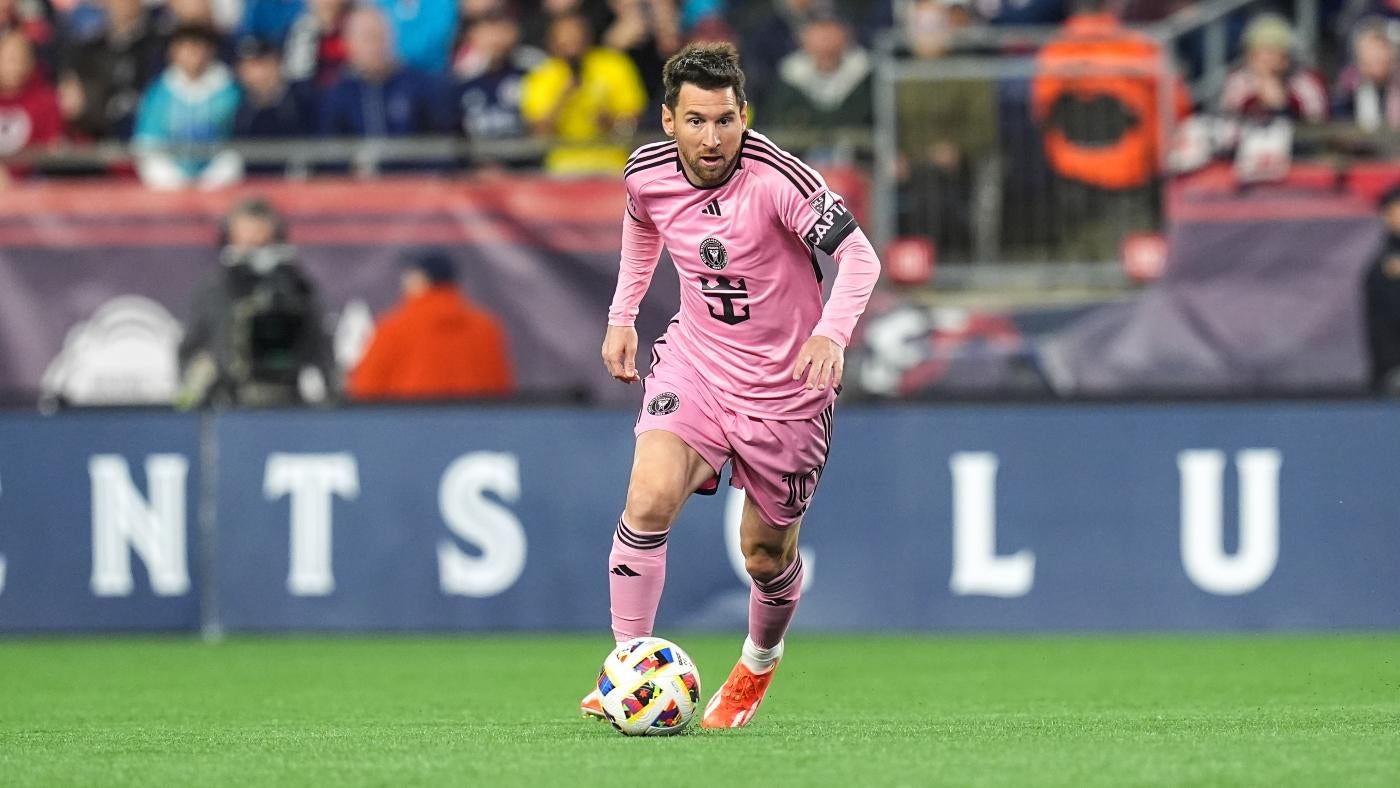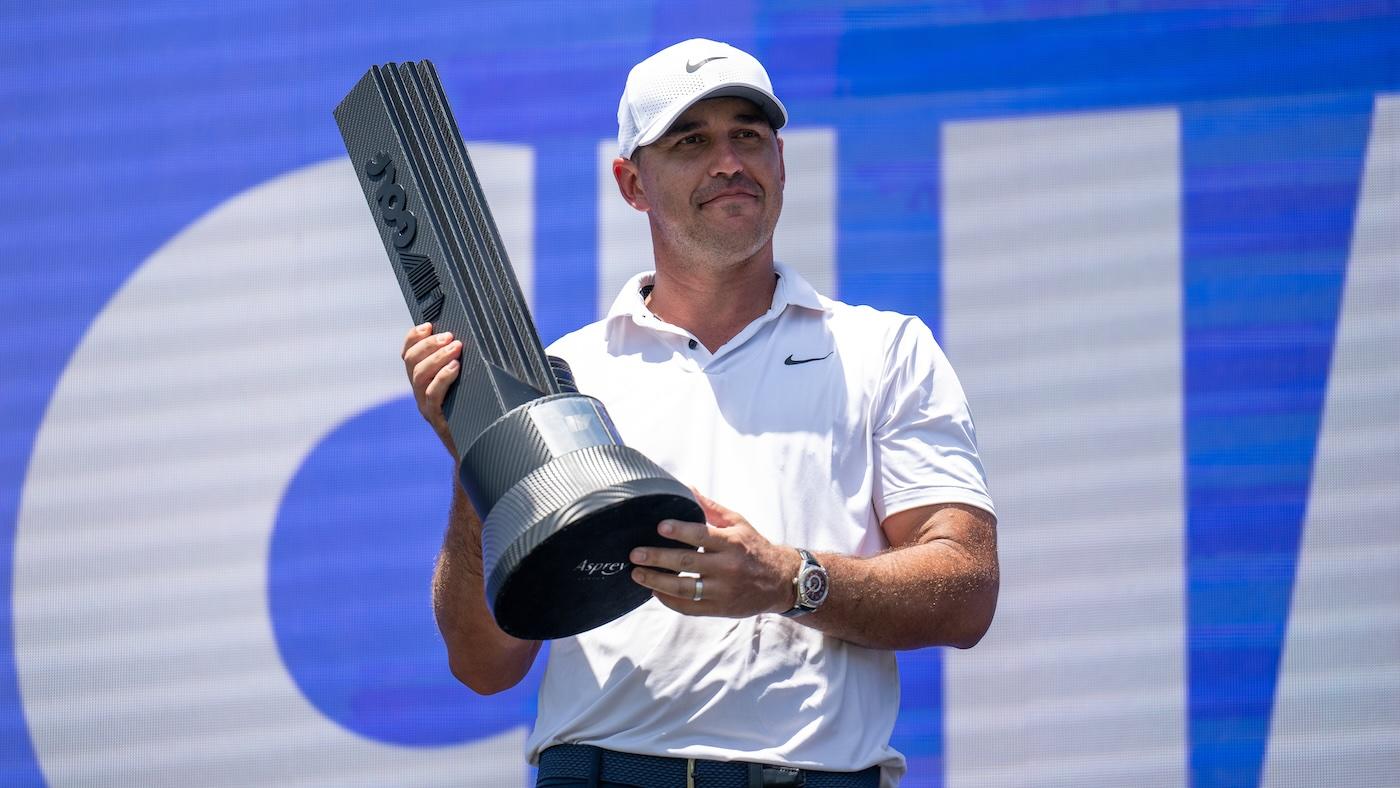The Magic may have lost to the Cavaliers, but they learned an important lesson in the process
Written by CBS SPORTS ALL RIGHTS RESERVED on May 5, 2024

The guiding principle the Orlando Magic have used to build their roster can be distilled to two draft picks they didn’t even make. In 2013, when current Magic executive John Hammond was running the Milwaukee Bucks, he used the No. 15 overall pick to select Giannis Antetokounmpo. Three years later, in 2016, he used the No. 10 overall pick on Thon Maker.
The outcomes of those two picks diverged about as far as two draft pick can. Antetokounmpo is a five-time First-Team All-NBA choice. Maker’s career ended after five NBA seasons. But the logic behind the two picks was the same: they were home-run swings on physical traits and theoretical skills rather than what was immediately apparent. President of basketball operations Jeff Weltman came from a Toronto Raptors team that has largely lived by the same philosophy: draft big wing-sized humans, then teach them the finer points of their roles as you go.
The Bucks and Raptors both prospered with that philosophy. The Magic are well on their way to doing the same. Their size is the envy of the NBA. Eight of their 11 most used players this season were 6-foot-9 or taller, and a ninth, rookie Anthony Black is 6-foot-7. That size isn’t just raw athleticism, either. Paolo Banchero and Franz Wagner are two of the best ball-handlers of their size in the NBA. Wendell Carter Jr., Jonathan Isaac and Mo Wagner can all shoot at least a bit. Together, they helped the Magic rank third in defense this season despite having the NBA’s fifth-youngest opening night roster. Broadly speaking, the plan is working.
They just ran into the same major flaw that has held the Bucks and Raptors back in the postseason when they lost their first-round series against the Cleveland Cavaliers on Sunday: roster balance matters. You need guards. You need adequate shooting. You need a roster with some semblance of adaptability to win in the playoffs.
The Magic ranked 29th in the NBA in 3-point attempts per game this season (31.2) and 24th in 3-point percentage (35.2%). They were slightly more willing to fire away from deep in the first round against Cleveland, but they made only 30.9% of their attempts in the series. You can win a series without making your 3’s. The Cavaliers proved that by beating the Magic in this one despite shooting 28.7% from deep across the seven games. But Cleveland scored 48.3 points per game in the paint. Orlando was limited to 37.3.
Both teams prioritized size in their roster-builds, but Cleveland actually has guards that can penetrate the paint. Donovan Mitchell scored 89 points in the final two games of the series, many of which came by contorting his body in tight quarters near the rim for incredible finishes. Orlando’s perimeter players weren’t as dynamic. They might have been able to overcome that with better spacing, but by the end of the series, Cleveland knew exactly how little it needed to invest in slowing down Orlando’s shooters. The Magic scored only 28 points in the paint in Game 7 and shot a ghastly 19-of-55 on 2-pointers because of how much help-defense Cleveland could send towards drivers.
It helped that Cleveland went through a version of this experience a season ago. When the Cavs played the Knicks in the first round last spring, they couldn’t land on a fifth player to pair with Mitchell, Darius Garland, Evan Mobley and Jarrett Allen. The trio of Isaac Okoro, Caris LeVert and Cedi Osman combined to shoot 23-of-69 on mostly unguarded 3-pointers while the Knicks devoted their defense to slowing down Mitchell and Garland. Cleveland learned its lesson. The Cavs invested in Max Strus in the offseason. Okoro’s shot improved to at least the point where he can attract defenders. Sam Merrill played a valuable role as “do nothing but shoot” role player off of the scrap heap. The Cavaliers are by no means a perfectly balanced team, but they acknowledged their flaw just enough to accentuate their strengths.
In that sense, this could be a somewhat beneficial loss for Orlando, all things considered. It got its young guys some very valuable postseason experience, but it also saw firsthand exactly where this roster needs to be tweaked. Fortunately, the Magic have the tools to make even bigger improvements than Cleveland did.
Orlando is looking at $35 million or so in cap space this offseason, a figure it could increase significantly by dropping team options on Joe Ingles and Mo Wagner (unlikely, but feasible under the right circumstances) or waiving the non-guaranteed contract of Jonathan Isaac (absolutely not happening). That will be valuable on the free agent market, but it also gives Orlando an advantage on the trade front. If the Magic’s preferred guard or shooter is under contract with a team dealing with tax or apron issues, then they could absorb that player without sending any money back.
A player to watch on this front would be Anferee Simons of the Portland Trail Blazers. There has been no reporting suggesting that he is available, but the Blazers are roughly $7 million away from the luxury tax line before even accounting for their lottery pick. With Scoot Henderson and Shaedon Sharpe in place, the Blazers have more guards than long-term starting slots. The Magic could ease their financial woes, and with all of their own first-round picks still available for trade, send back a nice package of assets.
They’ve already been linked to the two most famous shooters on the open market: Paul George and Klay Thompson. Getting George would mean offering a max contract, which would likely cost them Ingles or Wagner, if not both. Thompson would probably come at a more reasonable price. He reportedly turned down a two-year, $48 million deal last offseason, but given Golden State’s stated desire to duck the tax next season, the Magic could make life difficult for the Warriors with a short-term balloon payment.
If they wanted to go younger without sacrificing draft picks, Malik Monk is the obvious pick. He’s younger than Thompson or George, and he comes with the added benefit of being somewhat more attainable. His incumbent team, the Sacramento Kings, is limited in what they can offer him because of his Early Bird Rights. They can’t go above a 75% raise, which would take him to roughly $16.6 million next season. That’s a figure the Magic could easily top without breaking the bank. While Orlando does need more offense to take the next step, financial prudence is important here. Jalen Suggs and Franz Wagner are both eligible for rookie extensions this summer, and the Magic need to keep long-term financial viability in mind with whatever moves they make.
And when that move comes? The Magic won’t only advance a single round as Cleveland has. They have much further to go. After all, the Bucks and Raptors both won championships once they paired their tremendous size and athleticism with the right perimeter firepower. Orlando may not have access to a Kawhi Leonard, Jrue Holiday or Khris Middleton, but as the Cavaliers showed them in this series, a little bit of roster balance can go a long way.
The post The Magic may have lost to the Cavaliers, but they learned an important lesson in the process first appeared on CBS Sports.






